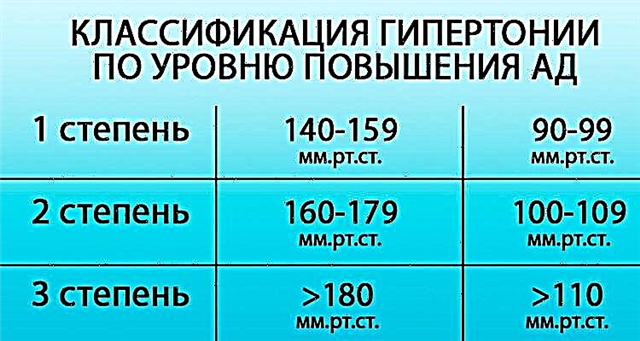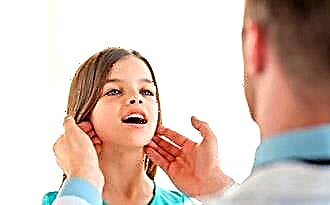Many mothers ask the same question: “If snot flows like water, in a child - how to treat it and whether it should be done. Or maybe you should just wait until they pass by themselves? " Alas, there is no definite answer. It all depends on many different reasons: age, environmental conditions, individual characteristics of the baby.
Only a pediatrician who monitors the health and development of your child can absolutely answer this question. We will only indicate here the main reasons why a child usually flows from the nose, the treatment of which is effective in one way or another.
Main reasons
 Watery transparent nasal discharge is the body's reaction to adverse environmental conditions, exposure to external or internal stimuli, entry of pathogenic microorganisms into the nasopharynx. And this means that not always, when liquid snot appears in a child, treatment should be started immediately. First, you need to assess the situation, observe other symptoms and try to understand what provoked them.
Watery transparent nasal discharge is the body's reaction to adverse environmental conditions, exposure to external or internal stimuli, entry of pathogenic microorganisms into the nasopharynx. And this means that not always, when liquid snot appears in a child, treatment should be started immediately. First, you need to assess the situation, observe other symptoms and try to understand what provoked them.
All the main reasons can be roughly divided into three large groups: infectious, non-infectious, allergic. The table below lists the main causes of a particular group, as well as their main symptoms:
| Infectious | Non-infectious | Allergic | |
| Causes |
|
|
|
| Symptoms |
|
|
|
When a child's snot, like water, pours, how to treat it directly depends on the cause of their appearance. Sometimes it is difficult to establish it, since symptoms from two or all three different groups may be present at the same time. For example, due to hypothermia, a baby's snot flowed, his nose was dripped with vasoconstrictor drops, and an allergy began.
We emphasize that these are only basic and very generalized symptoms, on the basis of which an accurate diagnosis cannot be made on your own! That is why, when liquid snot appeared in a child, what to treat should only be decided by a doctor - a pediatrician or an allergist.
Wrongly chosen treatment can drag out time, the disease will move to a new stage. And in the case of an allergic reason - to intensify its manifestations.
The best medicines
 We dwelled in such detail on the reasons why liquid transparent snot appear in a child, precisely because the method of treatment that will be most effective directly depends on them. The course of therapy in the event that the disease is of an infectious nature should be prescribed by a doctor. Usually it includes several groups of drugs at once:
We dwelled in such detail on the reasons why liquid transparent snot appear in a child, precisely because the method of treatment that will be most effective directly depends on them. The course of therapy in the event that the disease is of an infectious nature should be prescribed by a doctor. Usually it includes several groups of drugs at once:
- Antibiotics Most often - a wide spectrum of action, which have a detrimental effect on pathogenic microflora. They are selected strictly individually, taking into account the age and general health of the baby. Modern children's drugs have minimal side effects, but they quickly cure the disease and prevent complications. Usually children are prescribed "Augmentin", "Amoxiclav", "Azithromycin", "Sumamed", etc. The course of treatment, depending on the severity of the disease, ranges from 5 to 14 days. The dosage is prescribed by the pediatrician and must be strictly observed.
- Vasoconstrictor nasal drops. They help to quickly stop the flow of snot from the nose, give the child the opportunity to breathe normally and relieve puffiness well. Some drugs contain anti-inflammatory components. Drops such as Otrivin, Nazivin, Vibrocil, and Brizolin have proven themselves well. But this group of drugs has one serious drawback - they severely dry out the nasal mucosa. They can be used no longer than seven days, as erosion may develop, and the drops will become addictive and cease to give the desired effect.
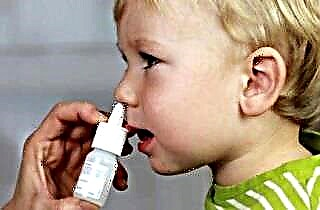 Immunomodulators. They increase immunity and activate the lymphatic system, significantly accelerating the healing process. Natural preparations based on herbal extracts. "Interferon", "Anaferon", "Viferon", "Likopid" help the child's body to cope faster with the disease. Both doctors and mothers have excellent reviews about them. But the doctor should still prescribe them - in combination with some antibiotics, they weaken their effect.
Immunomodulators. They increase immunity and activate the lymphatic system, significantly accelerating the healing process. Natural preparations based on herbal extracts. "Interferon", "Anaferon", "Viferon", "Likopid" help the child's body to cope faster with the disease. Both doctors and mothers have excellent reviews about them. But the doctor should still prescribe them - in combination with some antibiotics, they weaken their effect.- Antihistamines. When, due to allergies, a child has a runny nose, it must be treated with antiallergenic drugs. Only they can eliminate puffiness, relieve nasal congestion, ease breathing and stop a whole stream of snot and tears. Here you need to be very careful with the dosage. Most prolonged-release drugs are not suitable for children under the age of 12, therefore, for the first appointment, it is imperative to see a doctor! Most likely, he will recommend buying Diazolin, Clemastin, Suprastin, Fenkarol, Erius (for the smallest it is in the form of syrup!), Astemizole. Take strictly according to the instructions!
 Antipyretic. An increase in body temperature is a protective reaction of the body, which shows that the immune system is working. Therefore, bring down the body temperature, which has not reached 38.5 0C, doctors strongly discourage. As well as long-term use of antipyretic drugs. They are intended only to prevent the body from crossing the border dangerous for a child at 39.5-40.5 0C. With a persistent decrease in temperature to 38-38.5 0These medications are canceled. The most effective and safe for children are: "Paracetamol", "Panadol", "Tsefekon", "Calpol", "Efferalgan". The dosage is prescribed in the instructions. At high temperatures, any remedy can be given before the arrival of the doctor in order to stabilize the situation.
Antipyretic. An increase in body temperature is a protective reaction of the body, which shows that the immune system is working. Therefore, bring down the body temperature, which has not reached 38.5 0C, doctors strongly discourage. As well as long-term use of antipyretic drugs. They are intended only to prevent the body from crossing the border dangerous for a child at 39.5-40.5 0C. With a persistent decrease in temperature to 38-38.5 0These medications are canceled. The most effective and safe for children are: "Paracetamol", "Panadol", "Tsefekon", "Calpol", "Efferalgan". The dosage is prescribed in the instructions. At high temperatures, any remedy can be given before the arrival of the doctor in order to stabilize the situation.
Some parents choose to treat their child with homeopathic remedies. For colds, acute respiratory viral infections and even the flu, they help quite well if the child has a good immune system. But for serious infections, avoiding antibiotics can lead to complications.
Folk remedies
If liquid snot has just appeared in a child, what is the alternative to treat? You can turn to the proven "grandmother's methods." At the initial stage of colds, acute respiratory viral infections and flu, they have an excellent therapeutic effect. But they cannot cope with serious infections and severe allergies. So again, everything depends on accurate diagnostics. When you are sure that there is no serious threat to health, here are some time-tested remedies:
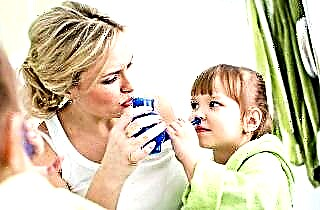 Warming up with an egg. Usually done in infants and toddlers.It is especially convenient to perform the procedure while the baby is sleeping. You need to boil a regular chicken egg and cool it to a temperature that is pleasant for the skin (check on the inside of the wrist!). Alternately, in a circular, neat movements, without pressure, "roll" the nose to the right and then to the left of the bridge of the nose, until the egg cools down. You cannot eat it - it is believed that it "rolls out the disease." We will not judge how true this is, but that in this way a sufficiently deep heating and massage is provided is indisputable. You can also warm your nose with a blue lamp or saline bag.
Warming up with an egg. Usually done in infants and toddlers.It is especially convenient to perform the procedure while the baby is sleeping. You need to boil a regular chicken egg and cool it to a temperature that is pleasant for the skin (check on the inside of the wrist!). Alternately, in a circular, neat movements, without pressure, "roll" the nose to the right and then to the left of the bridge of the nose, until the egg cools down. You cannot eat it - it is believed that it "rolls out the disease." We will not judge how true this is, but that in this way a sufficiently deep heating and massage is provided is indisputable. You can also warm your nose with a blue lamp or saline bag.- Rinsing with sea salt (saline iodine). A great way to relieve inflammation and remove excess mucus. The solution has a weak vasoconstrictor effect and a pronounced antiseptic. This requires a small soft-tip syringe. With a large amount of snot, you can first remove them by "pulling" the syringe outward. Then rinse it well, prepare a solution: 1 tsp. sea salt in half a glass of water (or ordinary and 2-3 drops of iodine). Tilt the child's head down so that the water drains immediately, and squeeze the contents of the syringe first into one and then into the other nostril.
- Onion or garlic with honey. They have a complex effect: antiseptic, bactericidal, anti-inflammatory, wound healing. The tool has only one drawback - it stings when instilled, so it is better to use it for children over 5-6 years old. Finely grate the onion or garlic and squeeze out the juice. Mix it with honey and sea buckthorn or vegetable oil in equal proportions. The composition can be stored in the refrigerator for up to a day. Dripping 2-3 drops 3-4 times a day.
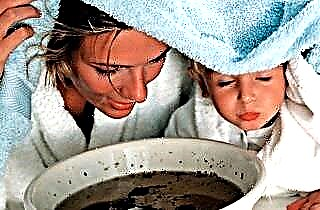 Aloe or Kalanchoe juice. The pulp of these plants has unique healing properties. Kalanchoe juice slightly irritates the mucous membrane, causing a sneezing effect. For this, many children do not like him, but he cleans his nose perfectly. Aloe works more gently, but no less effective and can be dripped even to babies. Peel the leaf of the plant from the tough skin, squeeze the juice out of the pulp and drip 3-5 drops into each nostril. Repeat 3-4 times a day.
Aloe or Kalanchoe juice. The pulp of these plants has unique healing properties. Kalanchoe juice slightly irritates the mucous membrane, causing a sneezing effect. For this, many children do not like him, but he cleans his nose perfectly. Aloe works more gently, but no less effective and can be dripped even to babies. Peel the leaf of the plant from the tough skin, squeeze the juice out of the pulp and drip 3-5 drops into each nostril. Repeat 3-4 times a day.- Inhalations from herbal decoctions. Decoctions of chamomile, eucalyptus, sage, pine needles, St. John's wort (not for babies!) Work best. Pour two tablespoons of dry crushed plants with a liter of boiling water and boil for 5-10 minutes. Then remove from the heat, seat the child next to him, cover his head with a towel (not completely so that there is air access!) And leave him to breathe in steam for 5-10 minutes. It is better to do it at night, so that you do not go out and do not take water procedures later.
As you can see, if a child has runny liquid snot, how to treat - the choice is huge. More experienced mothers already know what is best for their children and which of the treatment methods is traditional or folk.
Those who cannot yet rely on their experience or are not sure of the diagnosis should not experiment with the health of their own child. You need to visit a doctor and prescribe the correct treatment.

 Immunomodulators. They increase immunity and activate the lymphatic system, significantly accelerating the healing process. Natural preparations based on herbal extracts. "Interferon", "Anaferon", "Viferon", "Likopid" help the child's body to cope faster with the disease. Both doctors and mothers have excellent reviews about them. But the doctor should still prescribe them - in combination with some antibiotics, they weaken their effect.
Immunomodulators. They increase immunity and activate the lymphatic system, significantly accelerating the healing process. Natural preparations based on herbal extracts. "Interferon", "Anaferon", "Viferon", "Likopid" help the child's body to cope faster with the disease. Both doctors and mothers have excellent reviews about them. But the doctor should still prescribe them - in combination with some antibiotics, they weaken their effect. Antipyretic. An increase in body temperature is a protective reaction of the body, which shows that the immune system is working. Therefore, bring down the body temperature, which has not reached 38.5 0C, doctors strongly discourage. As well as long-term use of antipyretic drugs. They are intended only to prevent the body from crossing the border dangerous for a child at 39.5-40.5 0C. With a persistent decrease in temperature to 38-38.5 0These medications are canceled. The most effective and safe for children are: "Paracetamol", "Panadol", "Tsefekon", "Calpol", "Efferalgan". The dosage is prescribed in the instructions. At high temperatures, any remedy can be given before the arrival of the doctor in order to stabilize the situation.
Antipyretic. An increase in body temperature is a protective reaction of the body, which shows that the immune system is working. Therefore, bring down the body temperature, which has not reached 38.5 0C, doctors strongly discourage. As well as long-term use of antipyretic drugs. They are intended only to prevent the body from crossing the border dangerous for a child at 39.5-40.5 0C. With a persistent decrease in temperature to 38-38.5 0These medications are canceled. The most effective and safe for children are: "Paracetamol", "Panadol", "Tsefekon", "Calpol", "Efferalgan". The dosage is prescribed in the instructions. At high temperatures, any remedy can be given before the arrival of the doctor in order to stabilize the situation. Warming up with an egg. Usually done in infants and toddlers.It is especially convenient to perform the procedure while the baby is sleeping. You need to boil a regular chicken egg and cool it to a temperature that is pleasant for the skin (check on the inside of the wrist!). Alternately, in a circular, neat movements, without pressure, "roll" the nose to the right and then to the left of the bridge of the nose, until the egg cools down. You cannot eat it - it is believed that it "rolls out the disease." We will not judge how true this is, but that in this way a sufficiently deep heating and massage is provided is indisputable. You can also warm your nose with a blue lamp or saline bag.
Warming up with an egg. Usually done in infants and toddlers.It is especially convenient to perform the procedure while the baby is sleeping. You need to boil a regular chicken egg and cool it to a temperature that is pleasant for the skin (check on the inside of the wrist!). Alternately, in a circular, neat movements, without pressure, "roll" the nose to the right and then to the left of the bridge of the nose, until the egg cools down. You cannot eat it - it is believed that it "rolls out the disease." We will not judge how true this is, but that in this way a sufficiently deep heating and massage is provided is indisputable. You can also warm your nose with a blue lamp or saline bag. Aloe or Kalanchoe juice. The pulp of these plants has unique healing properties. Kalanchoe juice slightly irritates the mucous membrane, causing a sneezing effect. For this, many children do not like him, but he cleans his nose perfectly. Aloe works more gently, but no less effective and can be dripped even to babies. Peel the leaf of the plant from the tough skin, squeeze the juice out of the pulp and drip 3-5 drops into each nostril. Repeat 3-4 times a day.
Aloe or Kalanchoe juice. The pulp of these plants has unique healing properties. Kalanchoe juice slightly irritates the mucous membrane, causing a sneezing effect. For this, many children do not like him, but he cleans his nose perfectly. Aloe works more gently, but no less effective and can be dripped even to babies. Peel the leaf of the plant from the tough skin, squeeze the juice out of the pulp and drip 3-5 drops into each nostril. Repeat 3-4 times a day.
